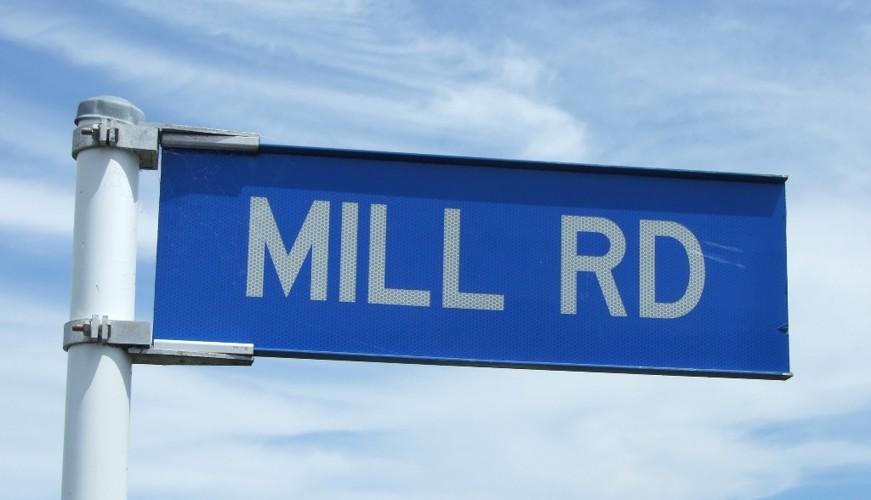
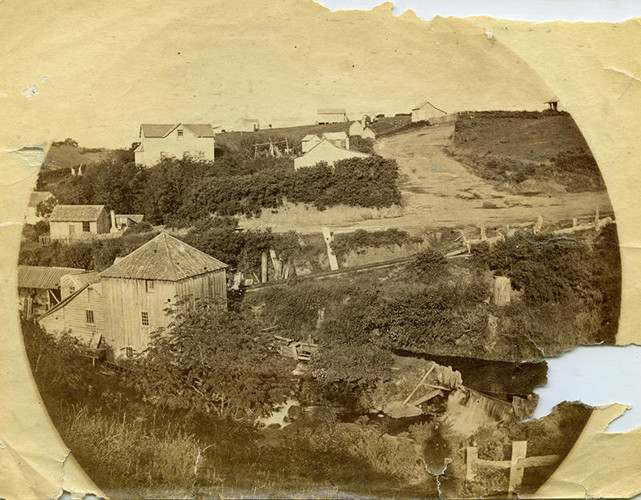
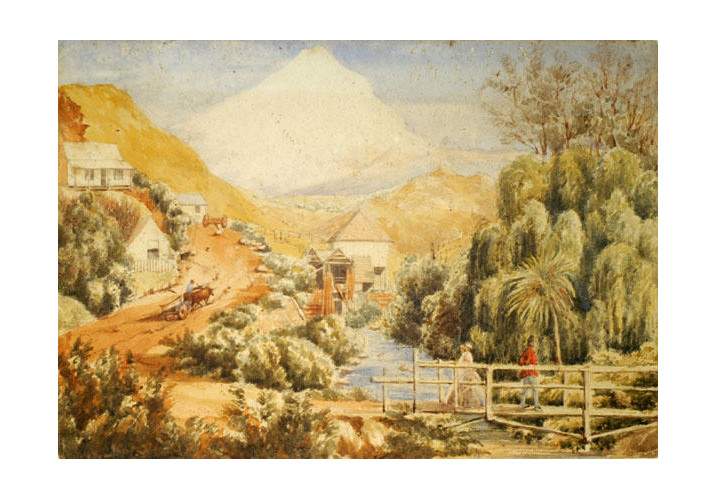
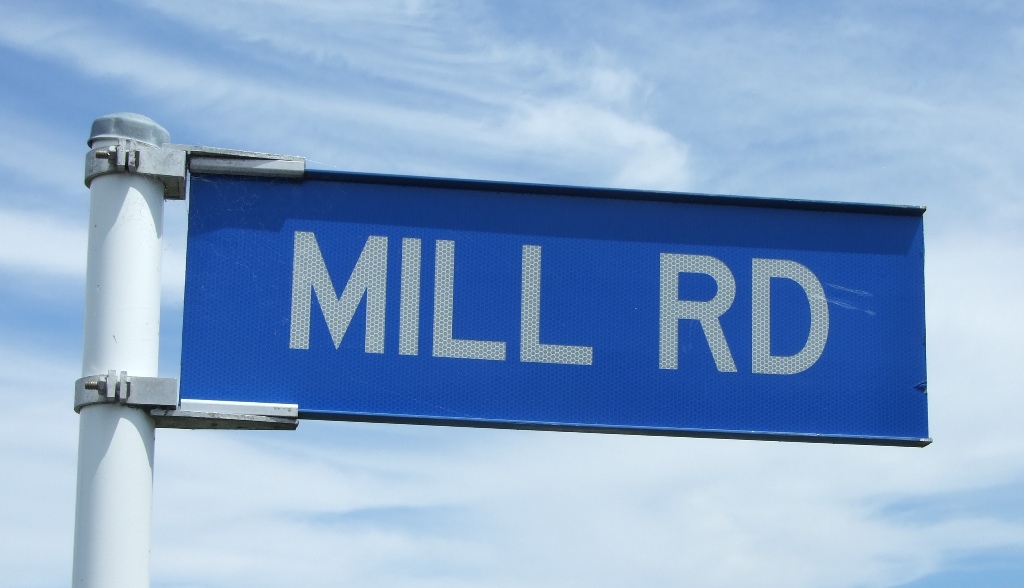
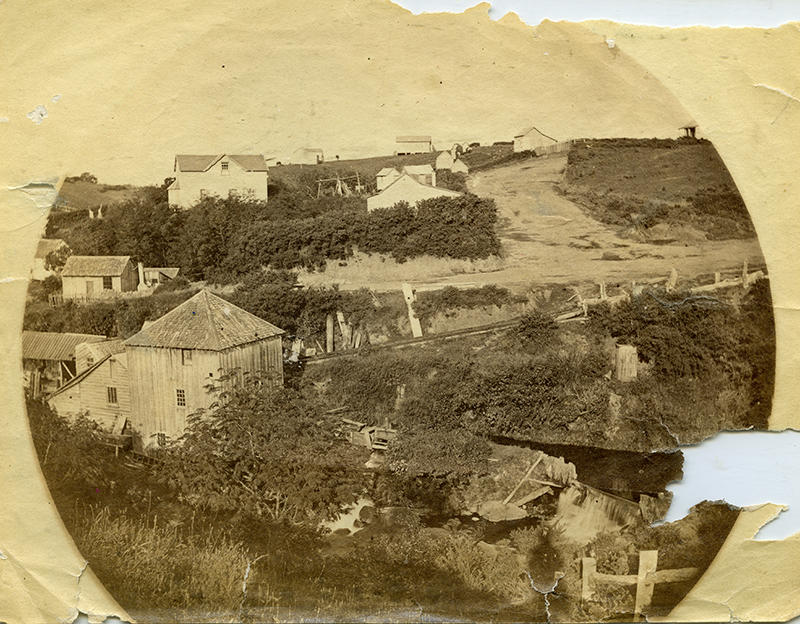
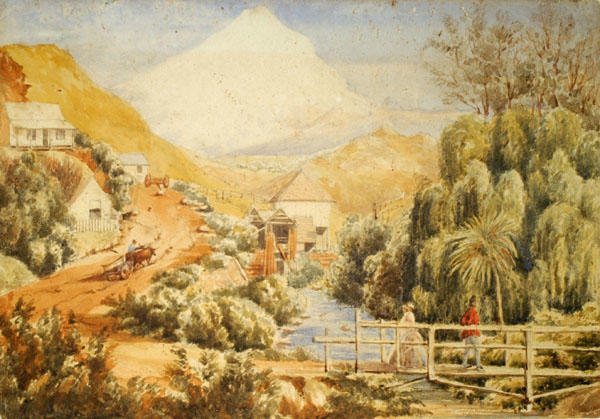
This road provided access to White and Gillingham's flour mill. The mill was located near where the Huatoki Stream meanders into a "V" shaped bend at the lower end of the road about 50 metres below the bridge. Today the site is zoned as residential.
Called the Victoria Mill, it was the second to be built in New Plymouth after the Alpha Flour Mill which was also on the Huatoki, about 100 metres up stream of the Leach Street viaduct
A total of 5 mills were built in New Plymouth between 1844 and 1867; the Alpha in 1844, the Victoria in 1845, the Union in 1849, the Blagdon in 1853 and lastly the Egmont in 1867.
The Victoria Mill had a volatile commercial life due to an uneasy partnership between White and Gillingham, and their relative inexperience in the milling industry, neither was a miller by trade. The onset of war in the 1860's also contributed to the mill's inconsistent profitability. Over its lifetime, it was leased several times to various local entrepreneurs. Finally in 1858, White was declared bankrupt and following a messy court battle, part ownership was handed to Dr Jacob Samuel who, along with another leaseholder, Holden Hammerton, managed the mill's assets and land.
The mill was advertised for sale in 1872 and later that year an auction was held for flour mill equipment and a water wheel, which was probably from the Victoria. The mill property was owned by the Samuel family up until 1903.
In 1921 the land was subdivided and reclassified to residential use and today there is little indication of the existence of the original mill. However, the Egmont Flour Mill which still stands proudly today provides tangible evidence of New Plymouth's early flour milling industry.
This story was originally published in the Taranaki Daily News.
Please do not reproduce these images without permission from Puke Ariki.
Contact us for more information or you can order images online here.